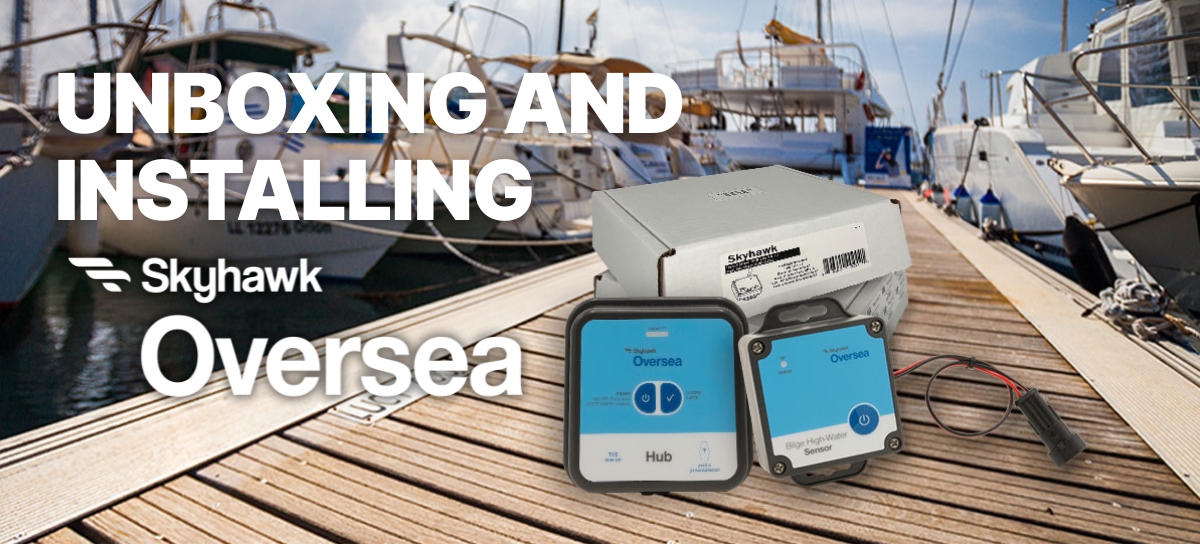
Boat Monitoring’s Hidden Benefit: Early Diagnostics
Boat monitoring technology is one of the fastest growing segments of the marine electronics industry, for plenty of good reasons. Theft of boats, motors, MFDs, marine electronics and other expensive equipment and gear has become a serious problem in every state. Boats make attractive and lucrative targets for those who consider stealing a worthy occupation. They are often stored in remote places out of public view and are loaded with swag that’s easy to take and sell— some of it simply bolted down, much of it not even that. Boats on trailers must seem like taking candy from a baby — already on wheels and easy to drag away. It’s understandable that many boaters are fighting back and giving themselves an extra layer of protection with remote boat monitoring systems.
More than just a security system
While security is an important part of what these systems provide, it is only part of the bigger picture. Solutions like the new Skyhawk Oversea boat monitoring system, for example, use a network of sensors to monitor a range of things boaters need to know about and alert them to potential issues. Using the Oversea app on your mobile phone, you can keep watch over your battery voltage, bilge pump activity, shore power connection, temperature/humidity/high water, and more.
Having this knowledge greatly decreases the chances of showing up for a day of boating fun only to find your batteries are dead, your bilge is full of water, or worst of all, your boat has turned into a submarine. Peace of mind that your boat will be ready for you when you show up with friends and family is the stock-in-trade of Skyhawk Oversea and other companies who specialize in this category.
There are other important benefits to monitoring your boat, however, that may not be as obvious. Monitoring your boat’s systems is like your boat getting a routine “check-up” at the doctor, and the things you learn can help avoid future surprises and save maintenance costs by heading off small problems before they can really cause you trouble.
Staying on top of your battery health
Here’s an example: If you receive alerts that your battery voltage is dropping, this can indicate a range of potential issues. It might simply be that your battery charger is disconnected. Or your onboard battery charger could be starting to falter. It could also indicate that your battery itself is failing and unable to hold a chargemost boat batteries have a life span of only three to five years. In this case, testing the battery and replacing it if needed can head off a problem that could ruin a future trip.
The problem could even lie with your boat engine’s alternator/charging system. There can be many reasons why a battery is losing juice; the point is if you know, you can investigate further and do something about it before it’s an emergency.
Your bilge pump – a powerful diagnostic tool
Bilge monitoring is another valuable benefit of systems like Skyhawk Oversea. If your bilge pump starts coming on more often than usual and/or staying on longer than normal, you want to know this. Don’t forget, however, to think about the bigger picture – why is it going on? Your boat could literally be telling you that something important is going on that could affect its future health, as well as the health of your bank account.
If there’s been a recent heavy downpour or storm, heavy bilge pump usage could be a temporary condition that will clear up with the weather. But there are other more foreboding reasons a boat could start taking on water. Maybe you have a thru-hull fitting or shaft seal that’s developed a slow leak.
When your boat is connected to shore power and your batteries are constantly charging, the bilge pump can keep up with it. That same situation 60 miles offshore is another thing altogether, because your batteries may eventually drain down from a constantly cycling bilge and, as well, leaks only get worse over time. I’ve been far offshore on a boat with leaking shaft seals and a bilge pump that couldn’t keep up, and it was not a fun experience.
Taking your boat’s temperature
Monitoring systems also measure temperature, humidity, and the presence of water (high-water warning). I’ve already covered why water where it shouldn’t be (namely, inside the boat) can indicate insidious problems you ignore at your own peril. High temperature and/or humidity in the bilge or engine compartment could also indicate engine troubles, cooling system issues and a host of other things not wise to ignore.
Regular checkups make for a healthy boat
Investing in a monitoring system can be like an “early warning system.” If you receive an alert, chances are good that there is something onboard that requires further investigation. Some things you can solve yourself; others may require the attention of a qualified mechanic. But in any event, the more quickly you handle problematic issues, the healthier your boat will be – and remain.
The smart boater will ask the “why” questions and take care of problems when they’re discovered. Preventative maintenance can help keep a boat’s mechanical systems healthy and stop problems from interfering with your time on the water.
The Skyhawk Oversea system starts at $299 ($249 during the pre-launch sale) providing position tracking and movement alerts along with a range of optional wireless sensors to monitor battery status, shore power status, temp/humidity/water, sound, and a host of other important areas. This is reasonable “health insurance” if you ask me.










